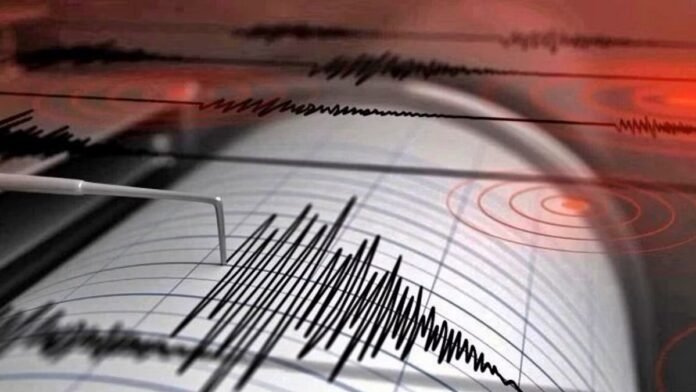
Key Points
- A magnitude 6.1 earthquake struck Sindirgi, Balıkesir province, on October 27, 2025, at 10:48 PM local time
- At least three buildings and one two-story shop collapsed, all previously damaged structures
- A total of 22 people were hospitalized due to panic-related injuries from falls
- No fatalities confirmed as collapsed buildings were unoccupied at the time
- Tremors felt across major cities including Istanbul, Bursa, Manisa, and Izmir
- Multiple aftershocks followed the main earthquake event
- This marks the second major 6.1 magnitude earthquake in the same region within three months
Ankara: A powerful earthquake measuring 6.1 on the Richter scale jolted western Turkey late Monday evening, sending shockwaves of fear through millions of residents across the Marmara and Aegean regions. Turkey’s Disaster and Emergency Management Authority (AFAD) confirmed that the epicenter was located in the town of Sindirgi in Balıkesir province, occurring at 10:48 PM local time (19:48 GMT) at a shallow depth of approximately 5.99 kilometers (3.72 miles).
Interior Minister Ali Yerlikaya reported that at least three unoccupied buildings and a two-story shop collapsed in Sindirgi. Crucially, these structures had already sustained damage from previous seismic activity, which prevented potential casualties. Sindirgi’s district administrator, Dogukan Koyuncu, confirmed to the state-run Anadolu Agency that no loss of life had been identified, though assessments were continuing.
Casualties and Immediate Impact
While there were no immediate fatalities, Balıkesir’s Governor Ismail Ustaoglu confirmed that 22 people were injured due to panic-related falls, which commonly occur because of the physical and psychological impact of earthquakes. The injured individuals received medical attention at local hospitals.
The earthquake’s intensity caused widespread panic among residents across multiple provinces. Many residents in Sindirgi chose to remain outdoors throughout the night, too frightened to return to their homes despite rainfall beginning shortly after the tremor. In response, Governor Ustaoglu announced that mosques, schools, and sports halls were being kept open to shelter people reluctant to go back inside.
Wide Geographic Impact
The seismic event was felt across a vast area of western Turkey, with tremors reported in Istanbul, the nation’s most populous city, located approximately 200 kilometers away, as well as the neighboring provinces of Bursa, Manisa, and Izmir. According to seismological estimates, approximately 12,000 people experienced severe shaking, 15,000 felt very strong shaking, 55,000 felt strong shaking, 599,000 felt moderate shaking, while over 21 million people experienced light shaking across the region.
Several aftershocks followed the main earthquake, further unsettling already anxious residents and keeping emergency response teams on high alert. Experts emphasized that this was not an aftershock from previous events but an independent seismic occurrence linked to activity along the southeastern segment of the regional fault line.
Recent Seismic History in the Region
This latest earthquake marks a troubling pattern for the Balıkesir region, which has experienced heightened seismic activity throughout 2025. In August 2025, another 6.1 magnitude earthquake struck the same Sindirgi area, killing one person, an 81-year-old woman who was pulled from rubble, and injuring 29 others. That August tremor caused 16 buildings to collapse, including two mosque minarets.
Since the August earthquake, the region has been experiencing frequent minor tremors, creating ongoing anxiety among residents. A 4.9 magnitude earthquake also struck the same region in September, continuing the pattern of seismic instability. Following these events, President Recep Tayyip Erdoğan has repeatedly expressed prayers for the safety and well-being of Turkish citizens affected by the earthquakes.
Turkey’s Earthquake Vulnerability
Turkey is situated on several major seismically active fault lines, making the country highly vulnerable to frequent earthquakes of varying magnitudes. The nation’s geographic position at the convergence of multiple tectonic plates means that earthquakes are a regular occurrence, though most are minor and cause minimal damage.
The most devastating recent earthquake in Turkey’s history occurred in February 2023, when a catastrophic 7.8-magnitude earthquake struck the southwestern region, with its epicenter near the ancient city of Antakya (Antioch). That disaster killed more than 53,000 people in Turkey and destroyed or damaged hundreds of thousands of buildings across 11 southern and southeastern provinces. An additional 6,000 fatalities were reported in the northern regions of neighboring Syria.
Government Response and Relief Operations
AFAD, along with all rescue services and local disaster management teams, immediately mobilized to survey the affected areas following Monday’s earthquake. Interior Minister Ali Yerlikaya stated, “Our teams are conducting on-site inspections. I extend my support to all citizens affected by the earthquake. May the Almighty protect our country from disaster”.
Field inspections, rescue activities, and comprehensive damage evaluations were initiated swiftly, demonstrating the improved coordination capabilities that Turkey has developed since establishing AFAD in 2009. The disaster management agency has requested the public to stay in safe places, avoid unstable structures, and not believe any rumors circulating on social media.
President Erdoğan has offered condolences and assurances to affected citizens, commending emergency response efforts and pledging continued government support for the region. Local authorities continue to monitor the situation closely, with teams remaining on standby to respond to any aftershocks or additional structural damage.





















































